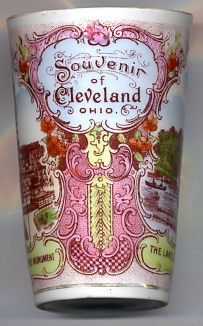
|
Cleveland is situated in northeast Ohio at the shore of Lake Erie at the mouth of the Cuyahoga River.
The place was chosen as the site of a new settlement in 1796 by Moses Cleaveland, one of the direcdtors and surveyors
of the Conencticut Land Company which had purchased the land in the Western Reserve region of Ohio in 1795.
The settlement was named Cleaveland by the surveyors (the spelling of the name was changed to Cleveland in 1831).
Cleveland was selected as the seat of the newly organized Cuyahoga county in 1810. The Ohio and Erie canal was built
between 1825 and 1832 (abandoned in the 1920's). Cleveland was incorporated as a city in 1836. Cleveland and Ohio City merged in 1854.
According to the census of 2000 Cleveland has a population of some 478,400 and is the second-largest city in Ohio.
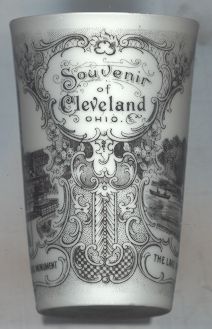
|
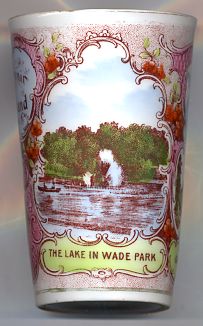
|
The history of  Wade Park [left] goes back to 1882 when Jeptha H. Wade, founder of the Western Union
Telegraph Company, donated 73 acres of land and 14 American deer to the City of Cleveland for a public park and an art gallery.
This was also the origin of the Cleveland Zoo, the seventh oldest zoo in the United States.
By 1907, Cleveland City Council had made plans to build the Cleveland Museum of Art and decided to move the Zoo to Brookside Park
which was completed in 1914. The Cleveland Museum of Art opened in 1916. Wade Park [left] goes back to 1882 when Jeptha H. Wade, founder of the Western Union
Telegraph Company, donated 73 acres of land and 14 American deer to the City of Cleveland for a public park and an art gallery.
This was also the origin of the Cleveland Zoo, the seventh oldest zoo in the United States.
By 1907, Cleveland City Council had made plans to build the Cleveland Museum of Art and decided to move the Zoo to Brookside Park
which was completed in 1914. The Cleveland Museum of Art opened in 1916.
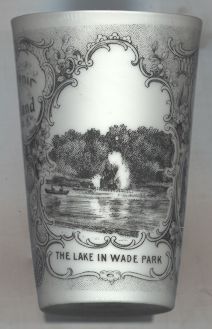
|
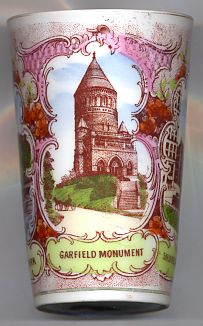
|
The  Garfield monument [left] is located in Lake View Cemetary, in the suburbs of Cleveland,
and is probably the first true mausoleum in America with the combination of tomb and memorial. Garfield monument [left] is located in Lake View Cemetary, in the suburbs of Cleveland,
and is probably the first true mausoleum in America with the combination of tomb and memorial.
James Abram Garfield was born in 1881 on a frontier farm in Cuyahoga county. After graduation (1856) from Williams College in Massachusetts, he became a teacher
of ancient languages and literature at the Western Reserve Eclectic Institute at Hiram, Ohio (the name was later changed, largely through his influence,
to Hiram Institute), and later (1857–1861) was its principal. During the Civil War he served in the Union army and was a major general of volunteers
when he resigned (1863) to take his seat Representative (Republican) in Congress. On March 4, 1881 he was elected 20th President of the United States.
On July 2 of the same year he was shot in a Washington, DC railroad station and died from an infection and internal hemorrhage on
September 19 after being taken to the New Jersey seaside for recuperation.
Many of the American people contributed to raise a large sum of money for the Garfield family. Some of this money was given to the Garfield National
Monument Association which began construction of the monument in 1885. Five years later, the monument was completed and dedicated on May 30, 1890.
The monument is constructed of native Ohio sandstone upon a design by George Keller, an architect of Hartford, CT, who had won the commission in a
national competition. Inside the monument under the tower is a white Carrara marble life-size statue of Garfield.
His tomb lies directly beneath the memorial hall.
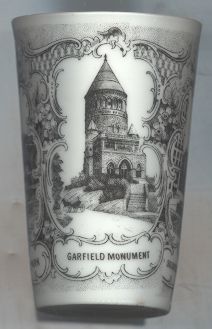
|
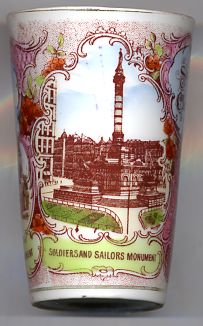
|
The  Soldiers and Sailors Monument [left] in Public Square in downtown Cleveland
was built in 1894 to honor the 10,000 men from northeast Ohio who served in the American Civil War (1861–1865).
Their names are engraved on the interior marble walls. Soldiers and Sailors Monument [left] in Public Square in downtown Cleveland
was built in 1894 to honor the 10,000 men from northeast Ohio who served in the American Civil War (1861–1865).
Their names are engraved on the interior marble walls.
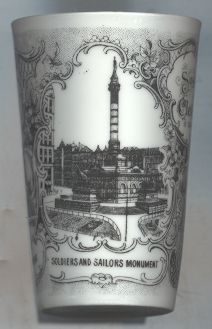
|
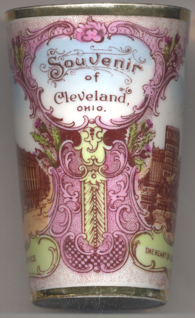
|
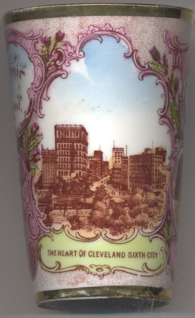
 The Heart of Cleveland Sixth City.
Cleveland emerged in the early 20th century as an important American manufacturing center.
In the early 20th century, Cleveland was the sixth-largest city in the US and thus adopted the
Sixth City nickname. In the mantime, however, Cleveland only ranks as the 51st in terms
of population (397,000 in 2010). The Heart of Cleveland Sixth City.
Cleveland emerged in the early 20th century as an important American manufacturing center.
In the early 20th century, Cleveland was the sixth-largest city in the US and thus adopted the
Sixth City nickname. In the mantime, however, Cleveland only ranks as the 51st in terms
of population (397,000 in 2010).
[https://en.wikipedia.org/wiki/Cleveland]
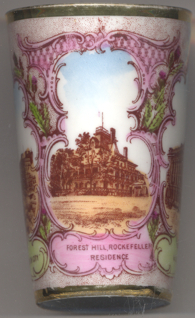
 Forest Hill Rockefeller Residence.
Forest Hill is an historic neighborhood spanning parts of Cleveland Heights and East Cleveland
and is bordered to the north by Glynn Road, the south by Mayfield Road, by Lee Boulevard to the
west and North Taylor Road to the east. Forest Hill was once the beloved summer home of oil magnate
John D. Rockefeller and his family. John D. Rockefeller, Jr. purchased the estate from his
father in 1923 and, with New York City architect Andrew J. Thomas, planned an upscale residential
and commercial development featuring distinctive French Norman style architecture. Forest Hill Rockefeller Residence.
Forest Hill is an historic neighborhood spanning parts of Cleveland Heights and East Cleveland
and is bordered to the north by Glynn Road, the south by Mayfield Road, by Lee Boulevard to the
west and North Taylor Road to the east. Forest Hill was once the beloved summer home of oil magnate
John D. Rockefeller and his family. John D. Rockefeller, Jr. purchased the estate from his
father in 1923 and, with New York City architect Andrew J. Thomas, planned an upscale residential
and commercial development featuring distinctive French Norman style architecture.
[https://en.wikipedia.org/wiki/Forest_Hill,_Ohio]
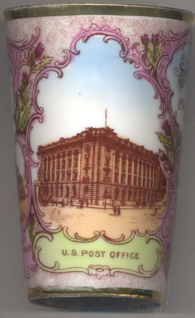
 U.S. Post Office.
The five-story, granite-faced building was constructed between 1903 and 1910. The building, designed
by the New York Architect Arnold W. Brunner, covers
the entire city block bounded by Rockwell Avenue on the north, Superior Avenue on the south, East
Third Street on the east, and Public Square on the west. It is one of Cleveland's great monumental
public buildings, skillfully illustrating the strong, classical characteristics of Beaux-Arts architecture.
Construction of the U.S. Post Office, Custom House, and Courthouse building lasted from 1903 until 1911.
The U.S. Post Office moved out in 1934. Additional courtrooms were added in 1950. In 1974 the
building was listed in the National Register of Historic Places. In 1998 it was renamed
Howard M. Metzenbaum United States Courthouse. U.S. Post Office.
The five-story, granite-faced building was constructed between 1903 and 1910. The building, designed
by the New York Architect Arnold W. Brunner, covers
the entire city block bounded by Rockwell Avenue on the north, Superior Avenue on the south, East
Third Street on the east, and Public Square on the west. It is one of Cleveland's great monumental
public buildings, skillfully illustrating the strong, classical characteristics of Beaux-Arts architecture.
Construction of the U.S. Post Office, Custom House, and Courthouse building lasted from 1903 until 1911.
The U.S. Post Office moved out in 1934. Additional courtrooms were added in 1950. In 1974 the
building was listed in the National Register of Historic Places. In 1998 it was renamed
Howard M. Metzenbaum United States Courthouse.
[https://en.wikipedia.org/wiki/Howard_M._Metzenbaum_United_States_Courthouse]
| | | | |











![[scale]](lineal.jpg)